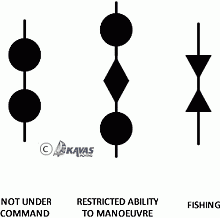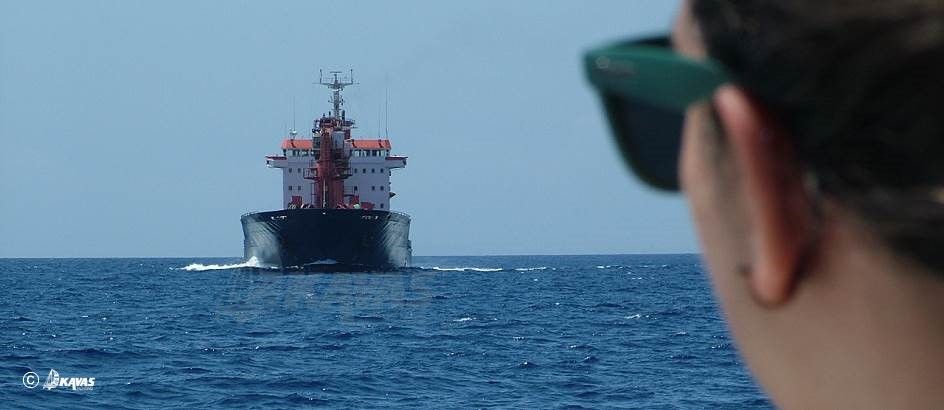About prevention of collision at sea - Regulations and examples
Collisions at sea are rare — and in most cases, avoidable. Yet they remain a major source of damage, liability, and ruined holidays, especially among leisure craft.
Understanding and applying the basic principles of safe navigation is the simplest and most effective way to prevent accidents.
If you are not already familiar with the international rules governing the movement of vessels, we recommend starting with our general overview of sailing right-of-way rules, which provides a structured introduction to the COLREGs.
In this article, we take a more practical approach. We examine the most common real-life situations where misunderstandings lead to collisions — and how to avoid them.
Sailing vessels encountering each other
When two sailing vessels are approaching one another, the following apply:
- A vessel on port tack must give way to a vessel on starboard tack.
- When both vessels are on the same tack, the vessel to windward must give way to the one to leeward.
These are simple rules, but they rely on situational awareness and clear identification of the wind direction.
It’s worth noting how different sailing is from driving. On land, the vehicle to your right has the right of way. At sea, with sailing vessels, it’s not about who’s to the right — it’s about where the wind is coming from.
In sailing, the wind replaces the road signs.
In crowded waters, the safest course of action may still be to maneuver early and obviously, even if you technically have right of way.
Sailboats Responsibilities

A sailboat in motion, avoids:
- A vessel without command capability
- A vessel limited in her maneuvering capability
- A vessel involved in fishing activities
Navigating the seas entails a complex dance of vessels, each type adhering to its specific set of rules.
Mastery of these priorities fosters a safer and more efficient maritime environment.
Sail vs. power
A sailing vessel under sail alone (without motor propulsion) generally has right of way over a power-driven vessel. However, this is subject to key exceptions:
- Overtaking rule: Any vessel overtaking another must keep clear, regardless of their type or means of propulsion.
- Narrow channels and traffic schemes: In designated channels or separation zones, sailing vessels must not impede the passage of power-driven vessels that can safely navigate only within those limits.
It is also worth remembering that, while you may know the rules, others around you may not. Many powerboat operators are not formally trained. Defensiveness and clear maneuvering are often safer than insisting on your right.
Approaching anchored vessels
An anchored vessel is not expected to maneuver. The entire burden of collision avoidance falls on the vessel underway. This applies even if the anchored vessel is in an inconvenient or poorly chosen location.
The best habit is to assume that any anchored vessel is immobile and treat it as an obstruction — not a partner in coordinated avoidance.
Entering or leaving harbours
In narrow or busy harbour entrances, the collision risk is significantly increased. While the COLREGs provide general rules, seamanship dictates caution:
- Vessels entering or exiting a harbour should reduce speed and keep a sharp lookout.
- Sailing vessels should avoid tacking across entrance paths when traffic is approaching or visibility is limited.
Having right of way does not protect you from damage or responsibility if you block access or force risky maneuvers.
Misunderstandings in overtaking
Overtaking situations cause many close calls. Key reminders:
- You are overtaking if you are approaching another vessel from more than 22.5° abaft her beam (i.e. you cannot see her sidelights).
- The overtaking vessel must keep clear at all times, regardless of size or type.
- The best way to signal intent is early movement — not indecision or last-minute course change.
When in doubt
The COLREGs include a critical clause: “Any action taken to avoid collision shall be taken in ample time and with due regard to the observance of good seamanship.”
In other words, if you are unsure who has priority, you are still obligated to act to avoid danger. The law protects prudent seamanship more than technical correctness.
It is also entirely permissible to deviate from the rules if doing so is necessary to avoid immediate risk.
A note on overconfidence
Many collisions occur because one skipper assumes the other has seen them, or will act a certain way. It is not uncommon for both skippers to think they are the stand-on vessel — and neither to yield.
The most reliable safeguard is a clear, early maneuver that makes your intentions obvious. Better to give way unnecessarily than to suffer damage in a collision you thought would never happen.
Summary
Understanding the rules of the road is not just about compliance — it’s about safety, responsibility, and the quality of your time at sea.
If you haven’t already, take time to review our guide to the COLREGs, and apply them actively in every trip you make. Safe navigation is not a theory: it is a daily habit.
Explore more practical tips in our Sailor’s Guide — from weather awareness to anchoring techniques.


